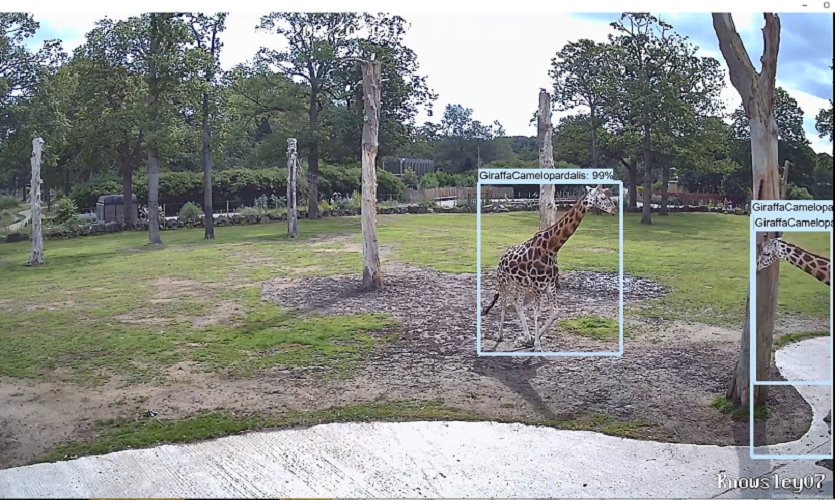Scientists unveil new weapon in war on animal poachers

Wildlife experts have revealed a new artificial intelligence system at Knowsley Safari to help protect endangered species from poachers.
The machine learning system, developed by computer scientists at Liverpool John Moores University, automatically recognises different species of animals which conservationists describe as a ‘step-change’ in species protection
LJMU’s School of Computer Science and Mathematics is working with the North West’s leading safari park to test the system by accustoming it to spotting giraffes, rhinos, lions and other park favourites. Researchers are taking tens of thousands of images, which will help calibrate software capable of accurately recognising each animal without the need for a human eye.
The system also has applications for food and farming, wildlife conservation and biological science, and could help provide predictors around animal health and behaviour.
Naomi Davies, Research and Conservation Officer, Knowsley Safari says: “Conservation is at the heart of what we do and we’re hoping that the trial of Liverpool John Moores University cameras will enable this new technology to protect threatened and endangered species in the future. Having many animal species across 550 acres of Safari means we’ve been able to facilitate some very robust testing of the equipment, making sure it’s ready for the wild.”
‘Mini-Africa’ on Merseyside
LJMU’s Professor Paul Fergus, who created the deep learning system with fellow computer scientist Dr Carl Chalmers, said: “We are thrilled that Knowsley Safari has offered us our own mini-Africa on Merseyside. It really is an invaluable resource given the challenges of conducting fieldwork abroad in the pandemic.”
The six-month trial will complete the testing phase of a project Carl and Paul have been developing for a number of years.
Watch the system in action on ITV Granada Reports, (Tuesday, November 30)
“Our system is already more than 90% accurate and the ability to get thousands of images of real animals in the safari park should enable us to create what we believe would be a world-beating technology.
“Currently camera traps are widely used to monitor and protect animals for farming and conservation but they have to be manually reviewed.”
Poaching threat
Panut Hadisiswoyo, from the Orangutan Information Centre in North Sumatra, said: “It will really help us to monitor and protect the forest from poaching as it gives us real-time images and video not ones that are hours or even days old from camera traps.
LJMU are developing the system in tandem with Vodafone and computing firm NVidia.
Apart from conservation, AI has huge potential for use in zoos, animal parks and reserves and to further our understanding of animals and our ability to cohabitate with them. For example, in zoos altered behaviours could be spotted which predict illness, pregnancy or other key issues.


